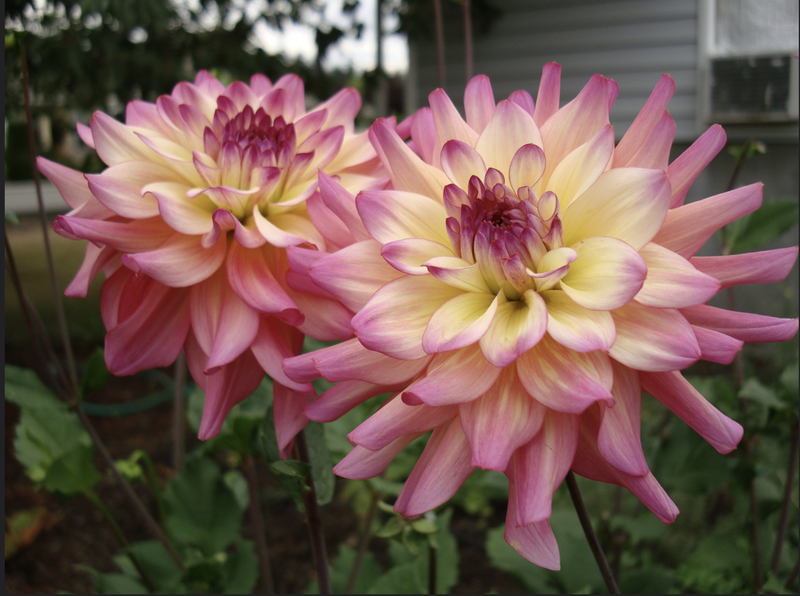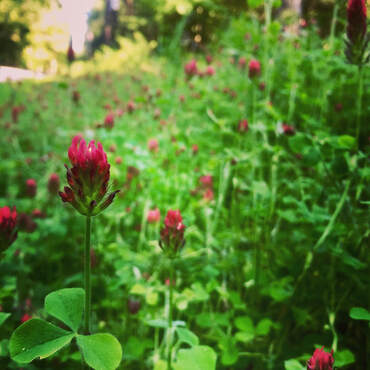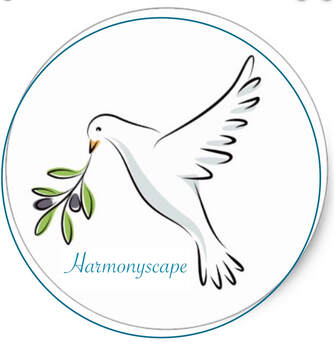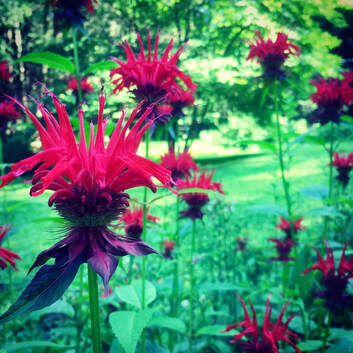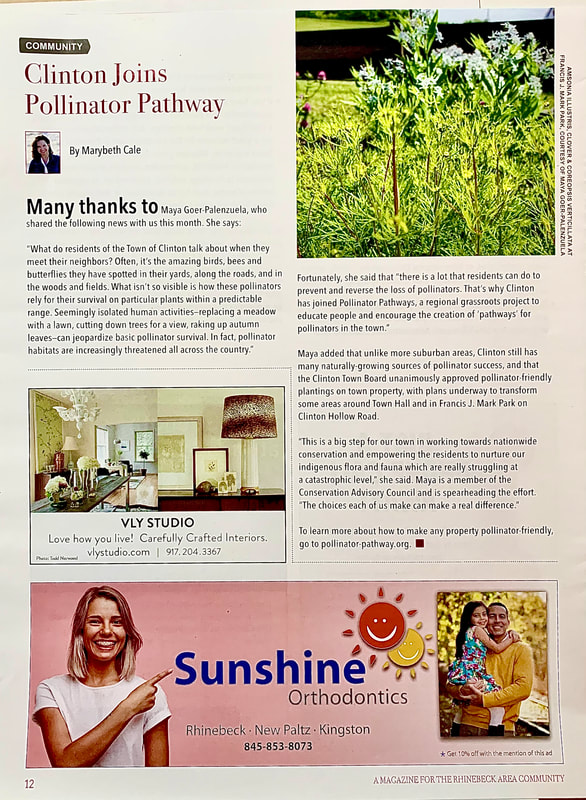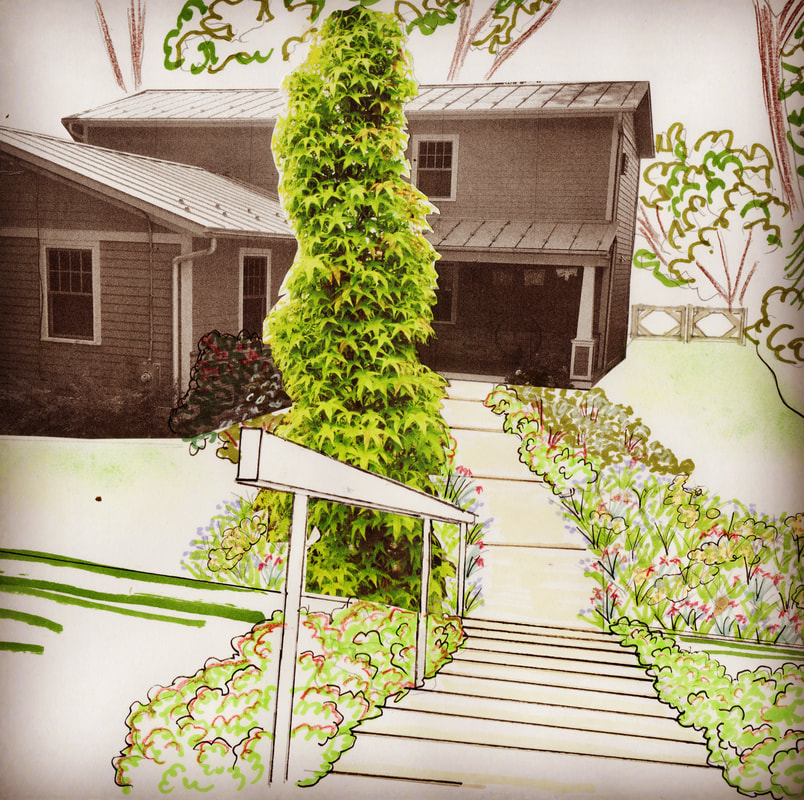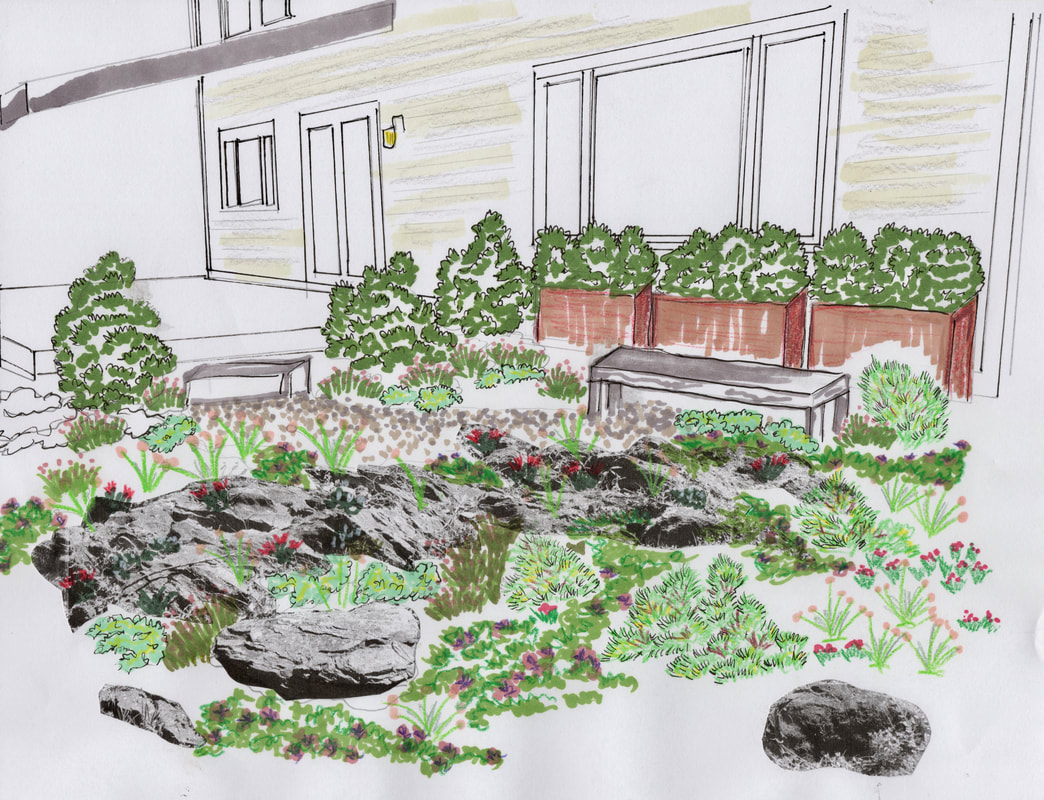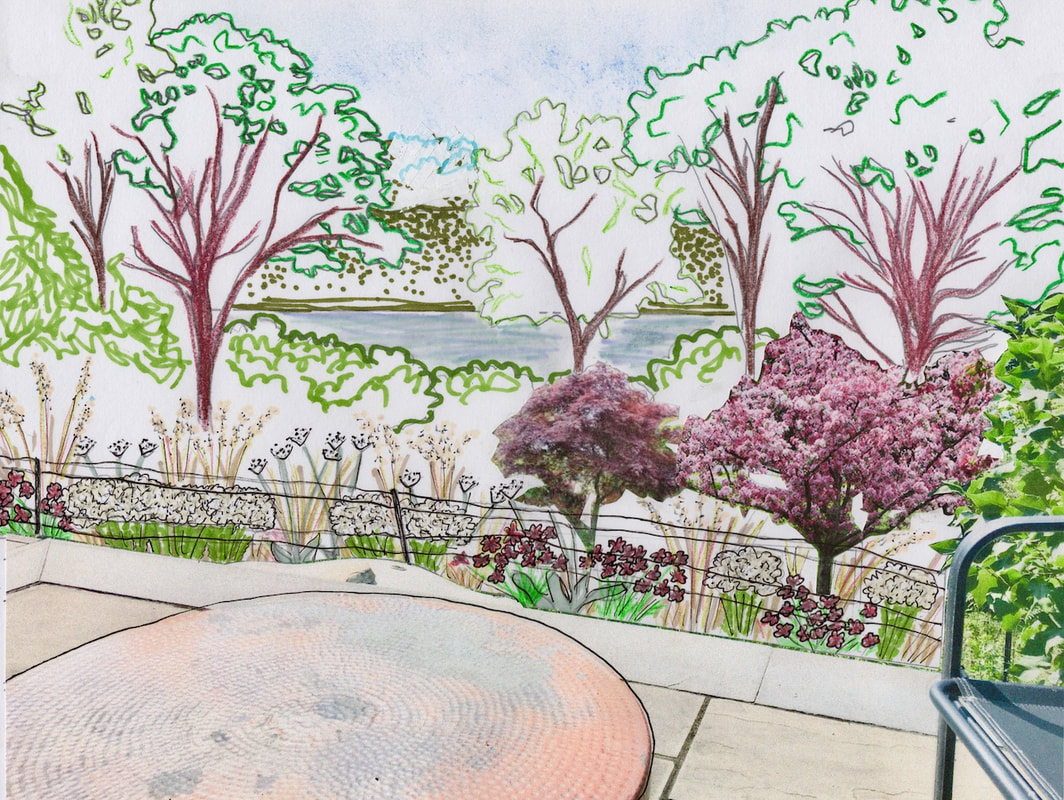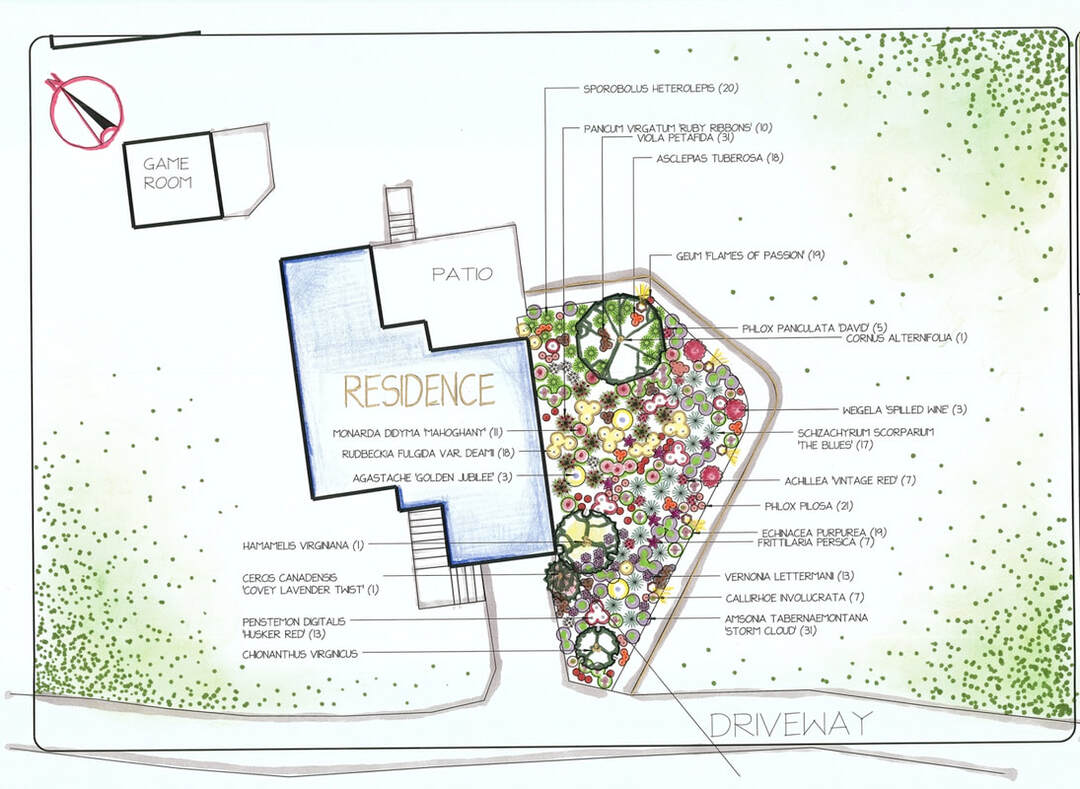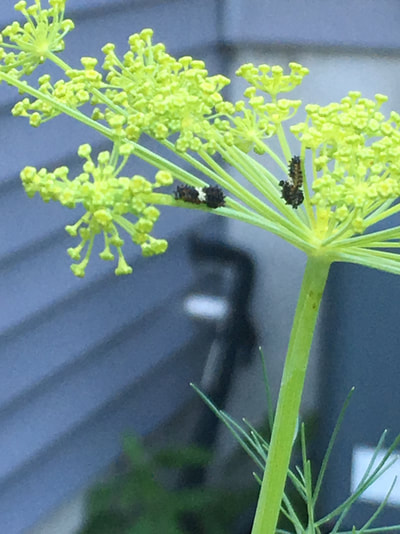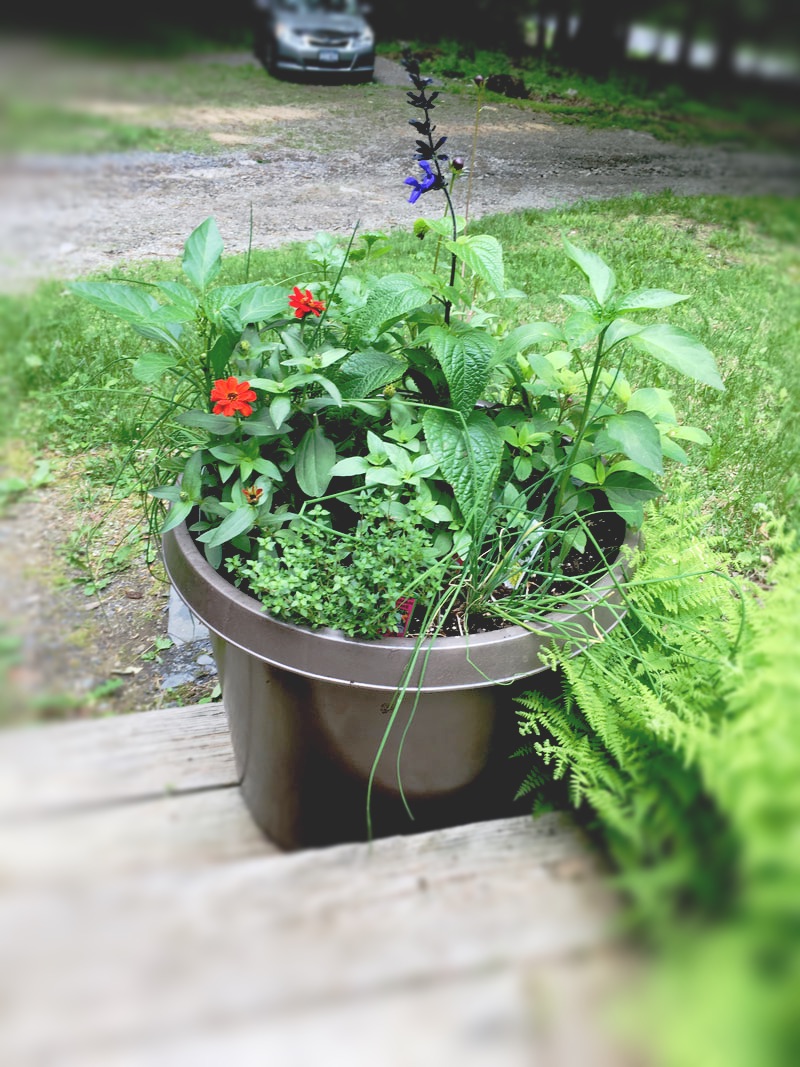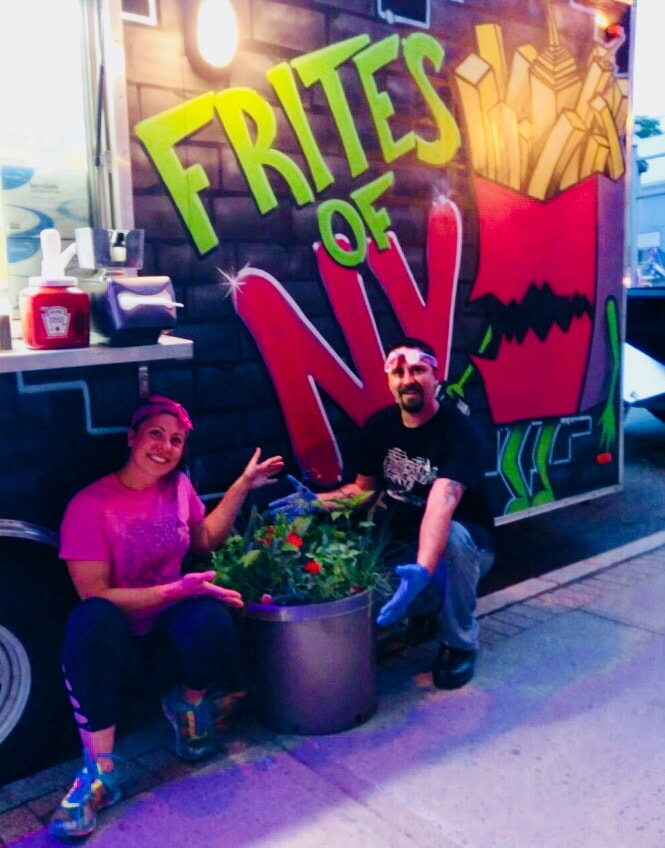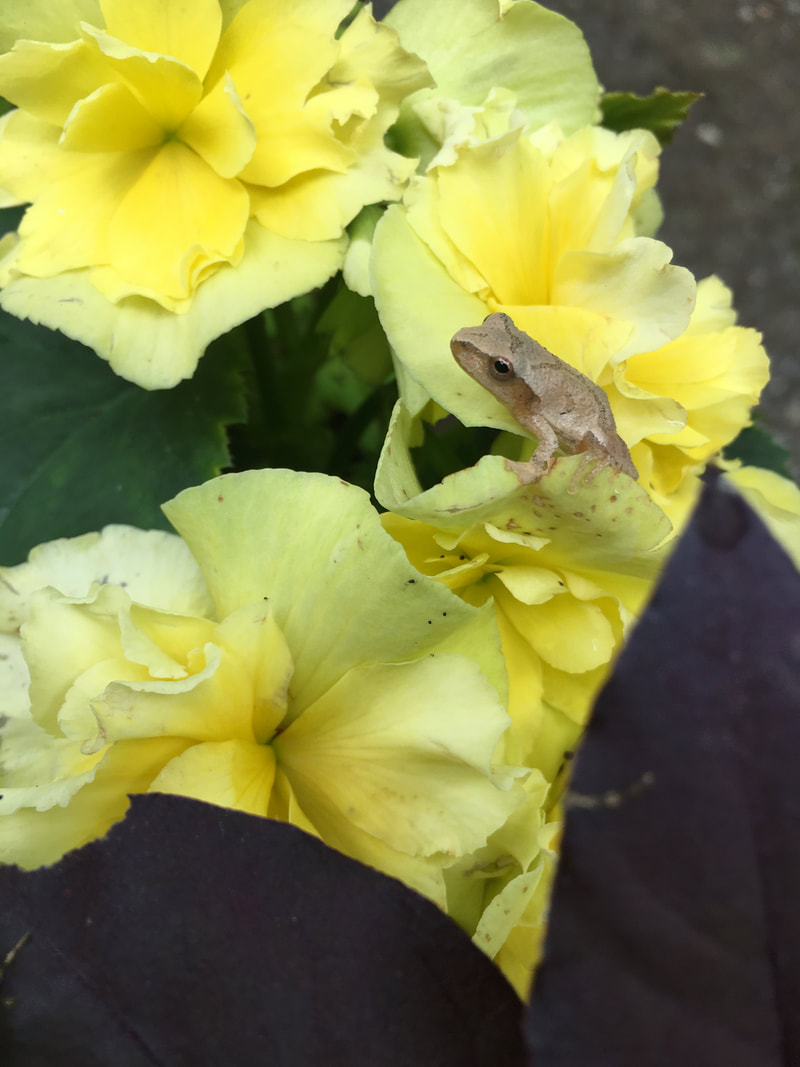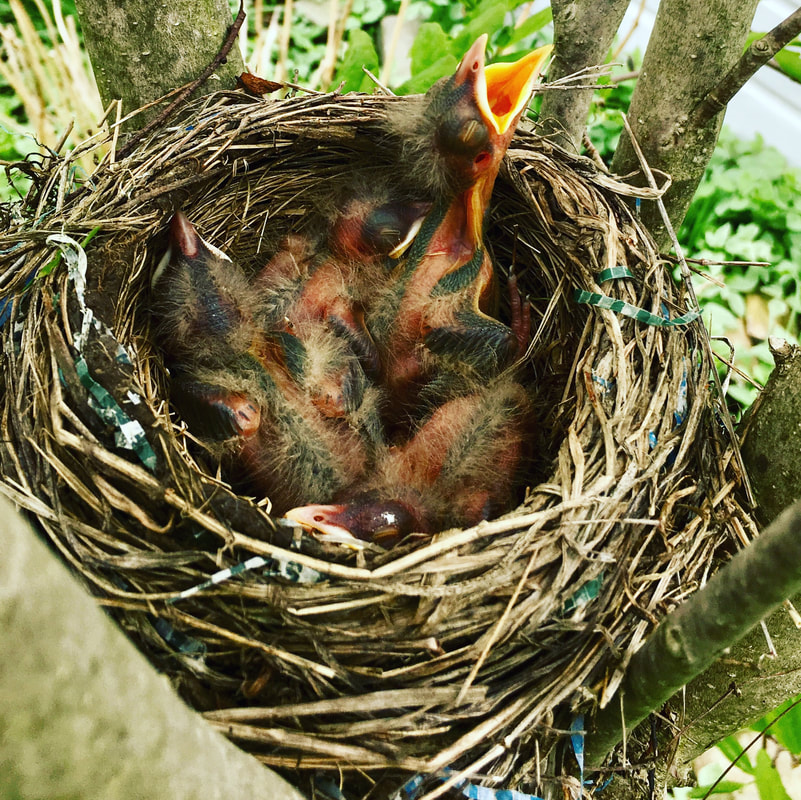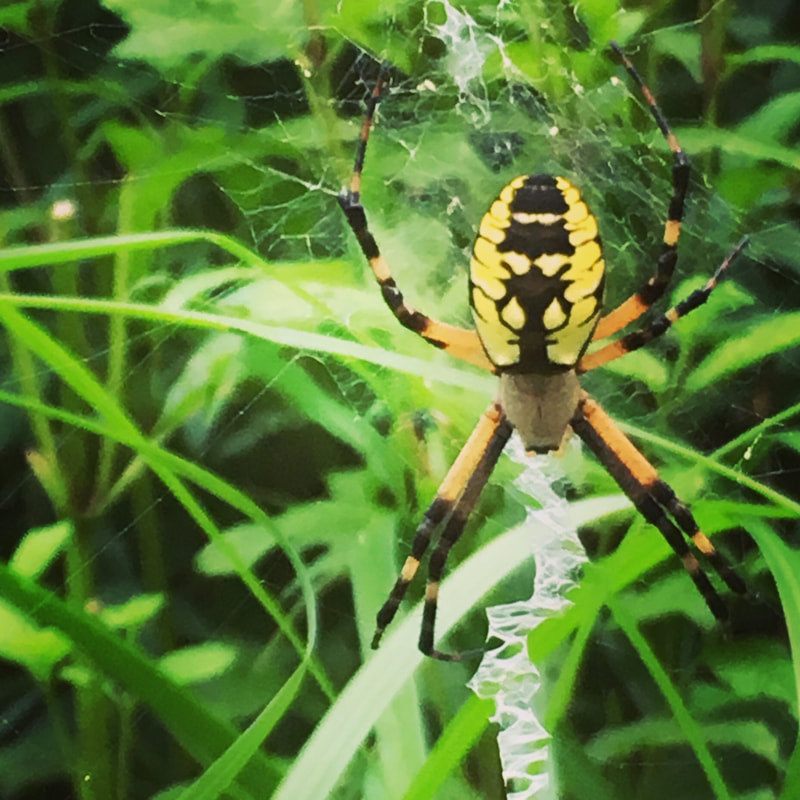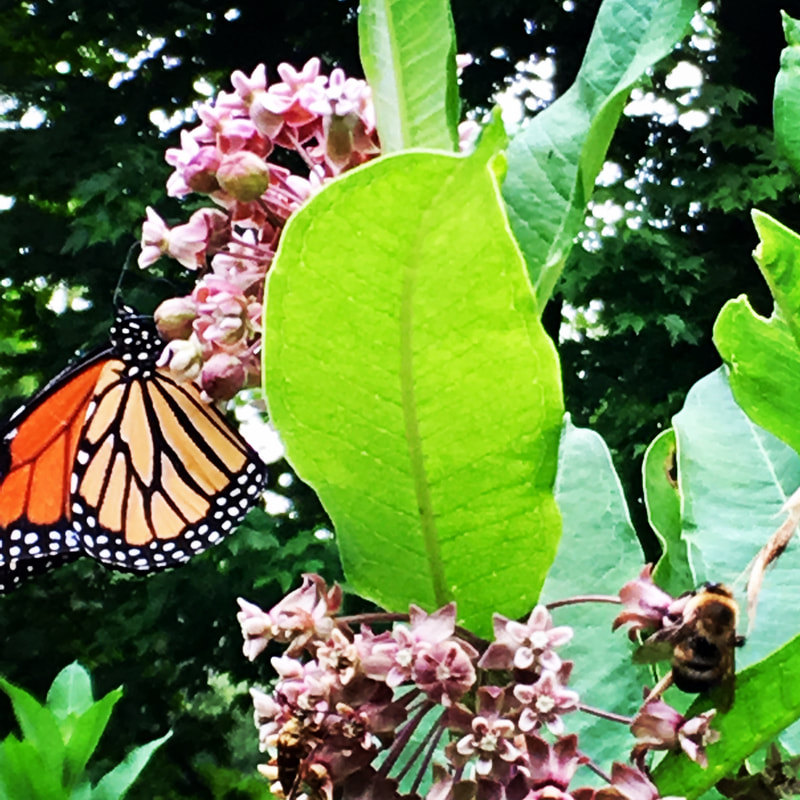Horticulture + Design = ART
Inviting Harmonyscape to Work
With you Means You Are Pledging
Allegiance to Being an Ally to
Your Earth.
Harmonyscape Principles & Commitments We Have
Adapted Into Goals For Our Clients:
- My Environment is My Sanctuary
- Collaborate With Nature-work with it, not against it
- NO chemicals
- Share knowledge and educate in every opportunity presented
- Increase Biodiversity
- Decrease Unnecessary Waste and Move Towards Being Self-Sustaining
- Reduce My Carbon Footprint
- Understand the Effect of My Choices and How Those Choices Impact My Biosphere On A Micro and Macro Scale
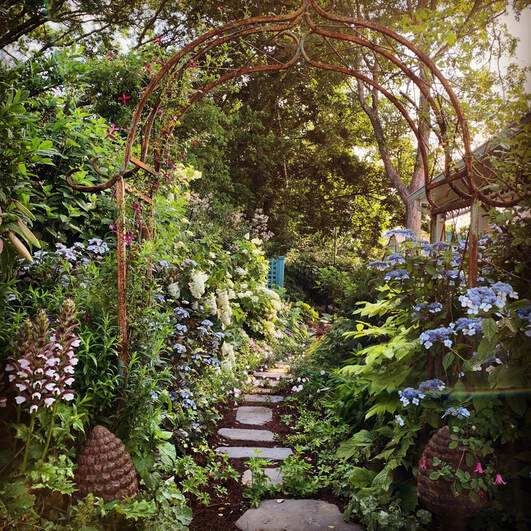
---Compose a haven-like symphony for your outdoor space that employs mindful organic methods---
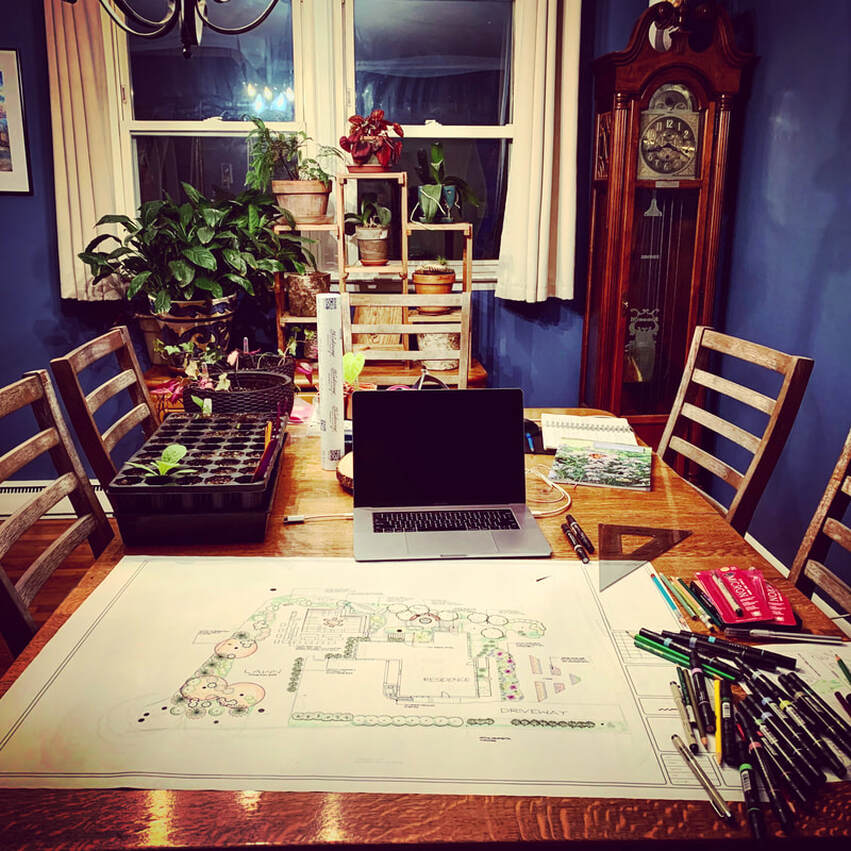
Repurpose.
A traditional barn used to keep a few animals, redesigned for storage and edible gardening.
Standing dead oak trees on the property were harvested and milled into the solid boards for the raised vegetable garden.
The sloping grade was leveled off by constructing a short wall using collected stones from the property, and filled with crushed blue stone-a widely available local stone.
Pollinator-friendly flowering plants were added to attract and feed foraging beneficial insects as well as adding color to the outdoor space and an opportunity to cut small bouquets
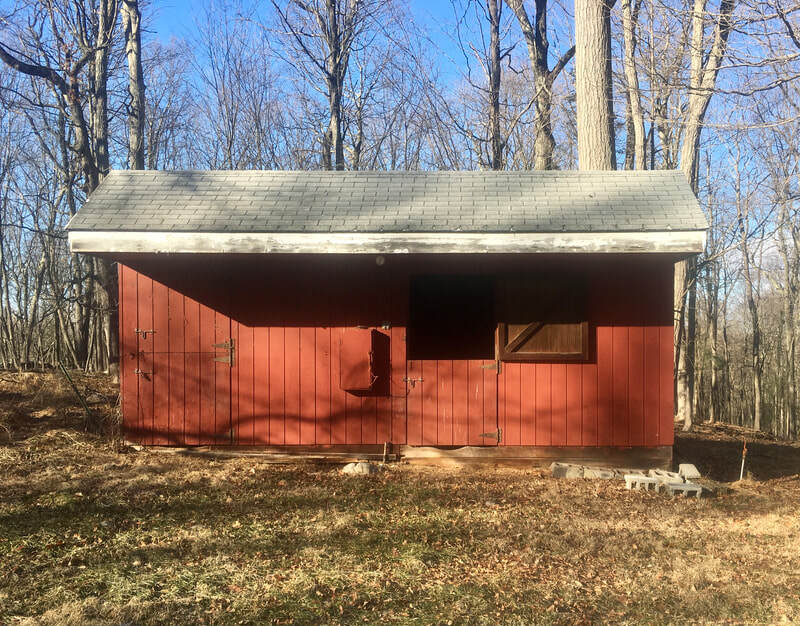
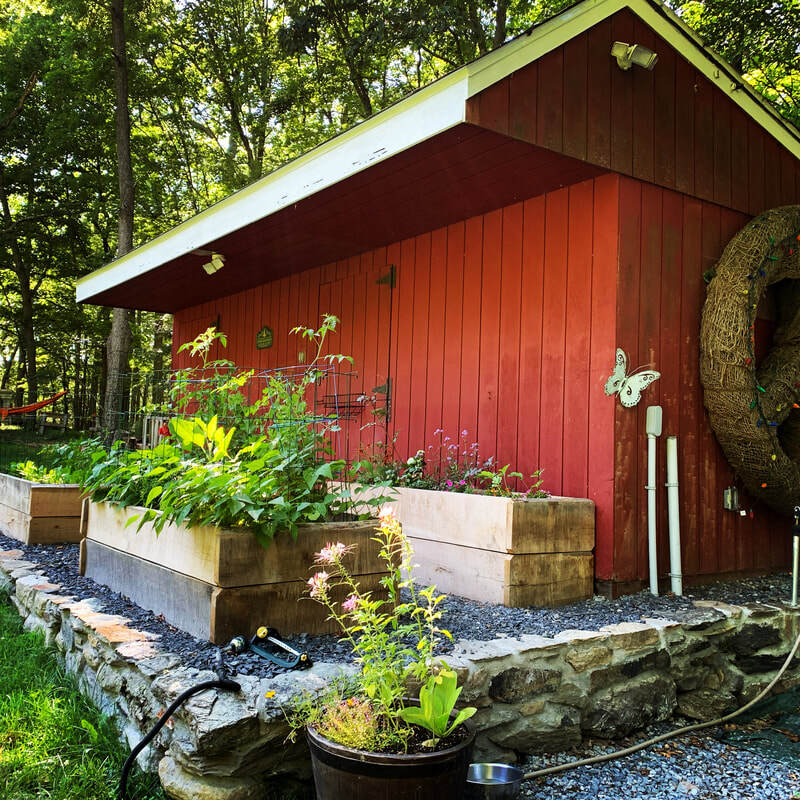
“species have the potential to sink or save the ecosystem, depending on the circumstances. Knowing that we must preserve ecosystems with as many of their interacting species as possible defines our challenge in no uncertain terms. It helps us to focus on the ecosystem as an integrated functioning unit, and it deemphasizes the conservation of single species. Surely this more comprehensive approach is the way to go.”
― Douglas W. Tallamy, Bringing Nature Home: How You Can Sustain Wildlife with Native Plants, Updated and Expanded
Watching nature choose your garden as a safe habitat is by far the greatest compliment anyone can receive!
Please watch this video I created about the severe predicament of our pollinators and the current state of their populations.
The heavy reality is that wildlife across the globe are experiencing habitat loss and poisoning from pesticides!!!
The projected outlook of this trend is that of total failure on economic, agricultural and biological planes within the next 50 years.
Soundtrack: Aaron Parks " Small Planet", Arcade Fire "Sprawl II (Mountains Beyond Mountains, SadGirl "One Way Ticket"
The heavy reality is that wildlife across the globe are experiencing habitat loss and poisoning from pesticides!!!
The projected outlook of this trend is that of total failure on economic, agricultural and biological planes within the next 50 years.
Soundtrack: Aaron Parks " Small Planet", Arcade Fire "Sprawl II (Mountains Beyond Mountains, SadGirl "One Way Ticket"
The Design of a Home
articles by Maya Goer-Palenzuela
With the promise of an early Spring from the groundhog this year, combined with the mountain of seed and plant catalogs rolling in, the hortisexual in me is unfairly being teased. I take time during this time of year, when I can look at my blank canvas and refer to notes about how last years annuals performed, to make some critical decisions about the bulk of the continuous bloom that will thrill me all year.
Of course, I will wind up making impulse buys at nurseries, and inherit some plants from fellow gardeners but I like to have an overall theme for my garden which requires some planning when considering color scheme, height, bloom time and when to start sowing seeds. This year, I found myself pining over light pink to apricot hues, paired with dark burgundy and deep purples.
Starting plants inside from seed is NOT as sophisticated as some may think. Instructions on the packets can make it fool proof, provided that you supply the water, heat and light. Turning my whole basement into a growing operation with starting vegetables, cut flowers, and perennials brings on a sense of scientific exploration. Placing the seedlings in bigger pots as they grow, and continuing to feed and check on them, brings on a maternal instinct. Placing them outside when they are ready and the weather permits strengthens my connection with the land and natural world around me. Overplanting and sharing the extra plants enhances my sense of community. Did I mention how much I adore this process? It’s addictive!
I would like to share some of my selections this year that I am excited to try.
Of course, I will wind up making impulse buys at nurseries, and inherit some plants from fellow gardeners but I like to have an overall theme for my garden which requires some planning when considering color scheme, height, bloom time and when to start sowing seeds. This year, I found myself pining over light pink to apricot hues, paired with dark burgundy and deep purples.
Starting plants inside from seed is NOT as sophisticated as some may think. Instructions on the packets can make it fool proof, provided that you supply the water, heat and light. Turning my whole basement into a growing operation with starting vegetables, cut flowers, and perennials brings on a sense of scientific exploration. Placing the seedlings in bigger pots as they grow, and continuing to feed and check on them, brings on a maternal instinct. Placing them outside when they are ready and the weather permits strengthens my connection with the land and natural world around me. Overplanting and sharing the extra plants enhances my sense of community. Did I mention how much I adore this process? It’s addictive!
I would like to share some of my selections this year that I am excited to try.
-
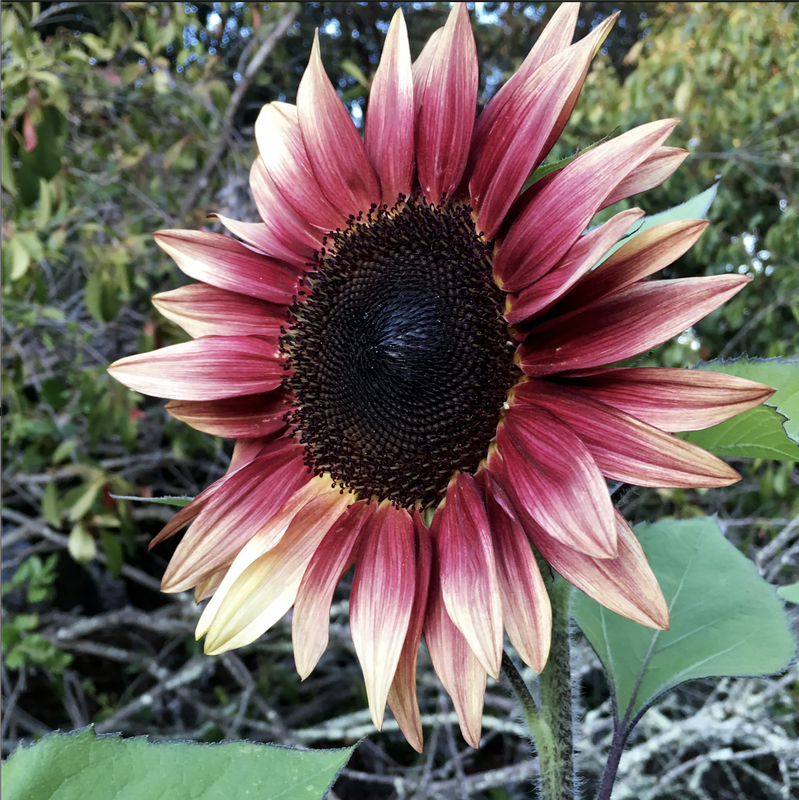 Growing 4’-6’, nothing says Summer in garden language quite like the sunflower. This bi-color flower can bloom in a range of colors from a lighter bronzish-red tinge to a real dark plum. The variation in bloom color makes for a lovely bouquet!
Growing 4’-6’, nothing says Summer in garden language quite like the sunflower. This bi-color flower can bloom in a range of colors from a lighter bronzish-red tinge to a real dark plum. The variation in bloom color makes for a lovely bouquet! -
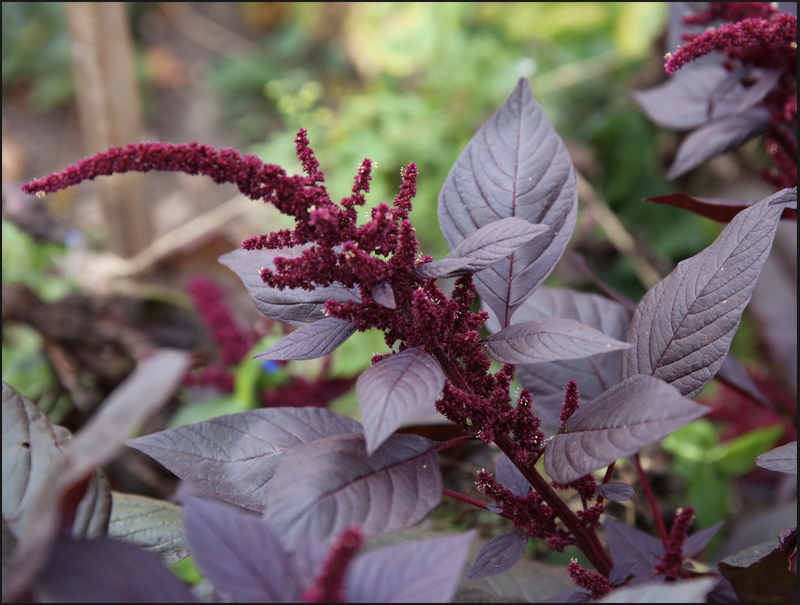 Amaranth ‘Hopi Red Dye’ Originally grown as a dye plant by the southwestern Hopi Nation, this variety has the reddest seedlings of any amaranth known. The Hopis use the deep-red flower bract as a natural dye to color their world-renowned piki bread. Harvest the seed before it drops to reduce self-seeding and make a gluten-free flour!
Amaranth ‘Hopi Red Dye’ Originally grown as a dye plant by the southwestern Hopi Nation, this variety has the reddest seedlings of any amaranth known. The Hopis use the deep-red flower bract as a natural dye to color their world-renowned piki bread. Harvest the seed before it drops to reduce self-seeding and make a gluten-free flour! -
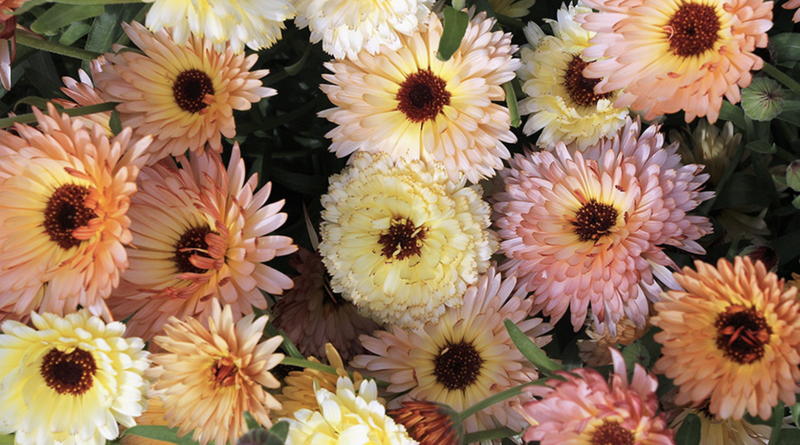 Calendula officianalis ‘Canteloupe’ An annual that I enjoy seeding annually. I’m excited to see the new shades of cream to apricot pink. These darling flowers are good cut flowers, host beneficial insects, and nurture pollinators.
Calendula officianalis ‘Canteloupe’ An annual that I enjoy seeding annually. I’m excited to see the new shades of cream to apricot pink. These darling flowers are good cut flowers, host beneficial insects, and nurture pollinators. -
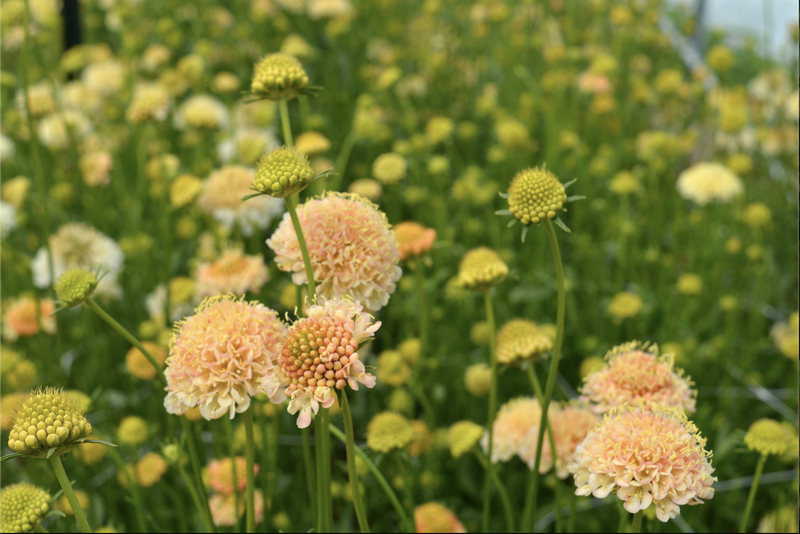 Scabiosa atropurpurea ‘Fata Morgana’ These perennial flowers are so easy to grow yourself. Watching butterflies flutter by and stop for the nectar that these flowers produce can make your day after you have been weeding your garden for hours! Cut them for bouquets, but leave some to go to seed and watch the encore performance during the colder months.
Scabiosa atropurpurea ‘Fata Morgana’ These perennial flowers are so easy to grow yourself. Watching butterflies flutter by and stop for the nectar that these flowers produce can make your day after you have been weeding your garden for hours! Cut them for bouquets, but leave some to go to seed and watch the encore performance during the colder months. -
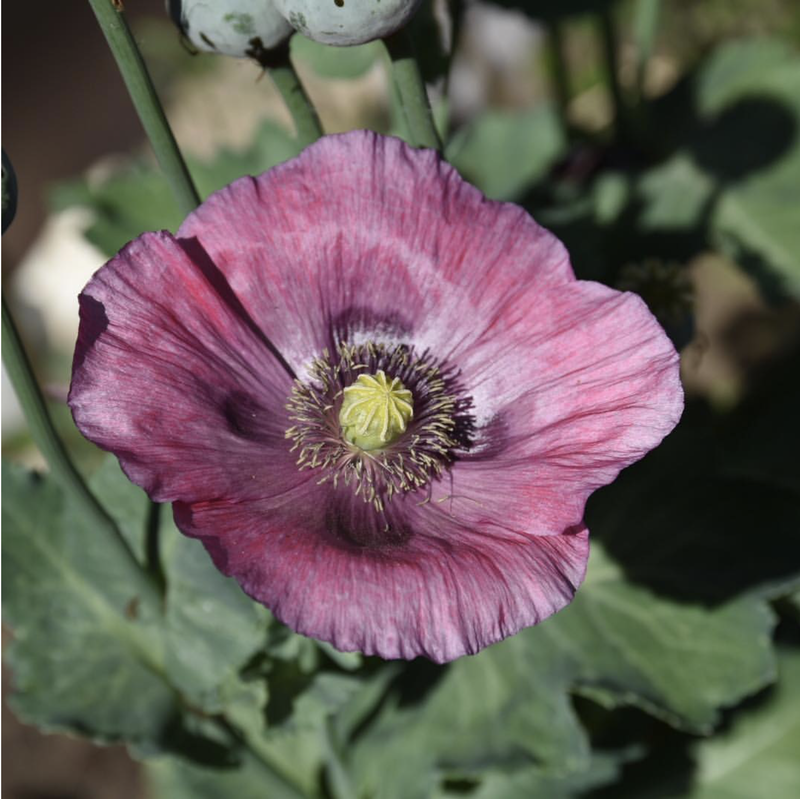 Papaver somniferum Breadseed poppy plants grow quickly from seed up to three feet tall. They are hardy, cool season annuals, germinating early in the season and the foliage is not affected by light frosts. The dull green to blue-green, glaucous leaves clasp the strong upright stems and provide an interesting foliage contrast against new the green leaves of Spring. All parts of this plant are toxic which make them unattractive to pesky garden visitors like deer and rabbits, but need to be handled by humans with precaution.
Papaver somniferum Breadseed poppy plants grow quickly from seed up to three feet tall. They are hardy, cool season annuals, germinating early in the season and the foliage is not affected by light frosts. The dull green to blue-green, glaucous leaves clasp the strong upright stems and provide an interesting foliage contrast against new the green leaves of Spring. All parts of this plant are toxic which make them unattractive to pesky garden visitors like deer and rabbits, but need to be handled by humans with precaution. -
